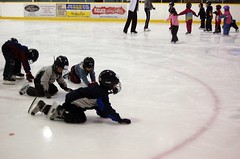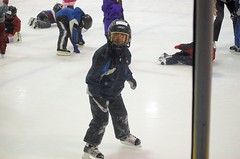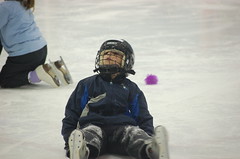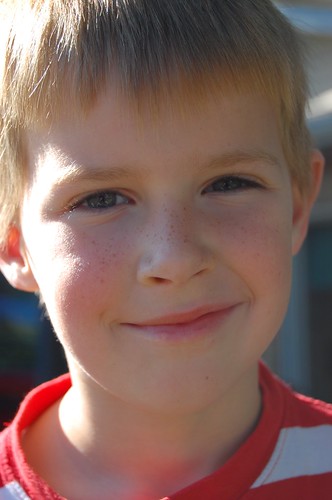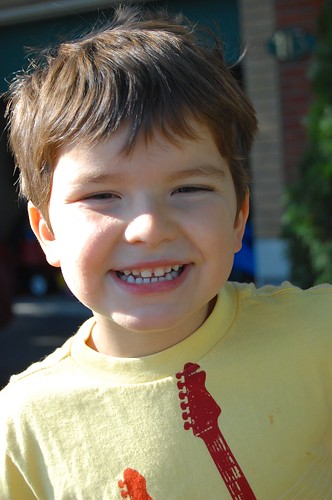It’s been a long, long time since I’ve written a 10-pages-in book review. This is largely because I am in the year of the series, working my way through all seven Harry Potter books, the His Dark Materials trilogy, Stephen King’s Dark Tower books, and I’m currently in the middle of re-reading one of my all-time favourite series, Douglas Adams’s Hitchhiker’s Guide to the Galaxy (a trilogy in five parts)(snicker). But this isn’t about those books.
The book I’m reading right now is Michael Pollan’s In Defense of Food: An Eater’s Manifesto. I’d seen it mentioned here and there, and it was on the library’s express read shelf. In a fit of optimism (I read quickly, but never seem to have the time to get around to reading lately, and the books are due in seven days) I picked it up. I am so glad I did.
I don’t know if this book would have resonated so deeply with me if I weren’t already in the midst of my own dietary recalibration exercise, but the timing couldn’t have been better. Pollan’s book is an examination of how we in Western society have reduced food to nothing more than nutrients, and asks why in a society completely obsessed with ‘healthy’ eating we are more overweight and more sick than ever before. It’s fascinating reading: part history lesson, part self-help, part diatribe. Even with the library-imposed deadline, I couldn’t put it down.
Why does Pollan think food needs to be defended? He observes that over the last generation or so, we have slowly replaced our intake of actual food with highly processed foodlike substances. He says that in reducing food to its nutritional components (not only macronutrients like proteins, carbohydrates and fats, but micronutrients like omega-3 and vitamins) and reducing the purpose of eating to bodily health, we actually do ourselves considerable harm.
In Defense of Food is broken into three parts. The first is a historical examination of how we came to be in this “age of nutritionism”, as Pollan calls it, and how “fake foods” became so ubiquitous. We in Western culture are so obsessed with the nutritional value of food that we have elevated it to an ideology requiring an “-ism”. Pollan blames the unholy trinity of the food industry, nutrition science and journalism our current mentality, and for propagating misleading and even dangerous dietary recommendations: “[M]ost of the nutritional advice we’ve received over the last half-century … has actually made us less healthy and considerably fatter.” Not to mention, he observes, ruining countless numbers of meals.
Pollan illustrates this in the example of margarine, “the first important synthetic food to slip into our diet.” He notes that margarine was created in the nineteenth century as a cheap substitute for butter, but became the poster child for the anti-saturated-fat movement that began in the 1950s at the advent of nutritionalism. This (albeit lengthy) paragraph illustrates not only Pollan’s point but his rather entertaining style as well:
[M]anufacturers quickly figured out that their product, with some tinkering, could be marketed as better – smarter! – than butter: butter with the bad nutrients removed (cholesterol and saturated fats) and replaced with good nutrients (polyunsaturated fats and then vitamins.) Every time margarine was found wanting, the wanted nutrient could simply be added (Vitamin D? Got it now. Vitamin A? Sure, no problem.) But of course margarine, being the product not of nature but of human ingenuity, could never be any smarter than the nutritionists dictating its recipe, and the nutritionists turned out to be not nearly as smart as they thought. The food scientists’ ingenious method for making healthy vegetable oil solid at room temperature – by blasting it with hydrogen – turned out to produce unhealthy trans fats, fats that we now know are more dangerous than the saturated fats they were designed to replace. Yet the beauty of a processed food like margarine is that it can be endlessly reengineered to overcome even the most embarrassing about-face in nutritional thinking — including the real wincer that its main ingredient might cause heart attacks and cancer. So now the trans fats are gone, and margarine marches on, unfazed and apparently unkillable. Too bad the same cannot be said of an unknown number of margarine eaters.
Fake foods and nutritionism aren’t Pollan’s only targets. He notes that the problem starts in the industrialization of food production. Pollan notes that two-thirds of our daily caloric intake comes from four crops: corn, soy, wheat and rice. Think about that. TWO-THIRDS! Humans are designed to be omnivores, so this kind of restriction — not to mention the lengths to which those four crops are processed — is a completely unnatural diet. He also talks about how the way in which we produce food has slowly eroded the quality of the food in order to improve yields, pointing out that it would take three apples from today to equal the iron content in one apple from the 1940s. He goes so far as to suggest that maybe this “nutritional inflation” is an underlying cause of the obesity epidemic: we are the first generation that is overfed AND undernourished at the same time.
As far as dietary advice, Pollan’s prescription is poetic in its simplicity: “Eat food. Not too much. Mostly plants.” In the last third of the book, in which I am currently immersed, he expands upon this advice with a few simple dietary rules of thumb like, “would your great-grandmother recognize it as food” and “don’t eat it if it has ingredients you don’t recognize and/or can’t pronounce.”
It’s an engaging, easy-to-follow and eye-opening account, and I can’t recommend it highly enough. And, as an aside, I think Pollan is the first published writer I’ve ever seen even more in love with the parenthetical interruption of his own stream of thought than I am. Read this book, because it will totally change how you think about food.
Coming up next: integrating these ideas into the Plan B diet.

